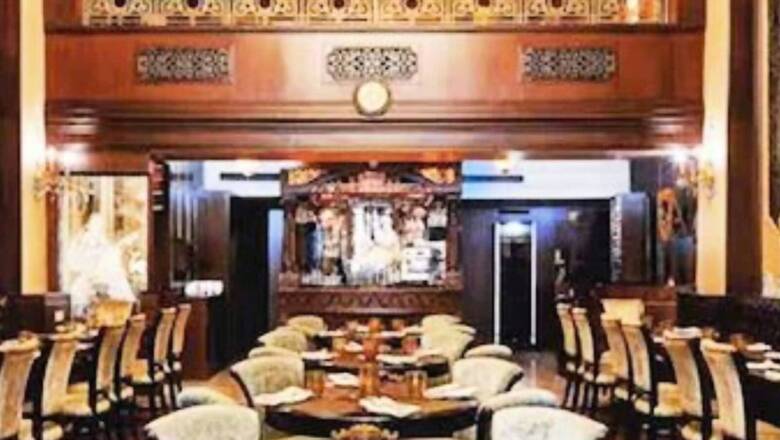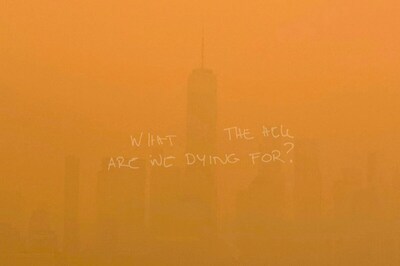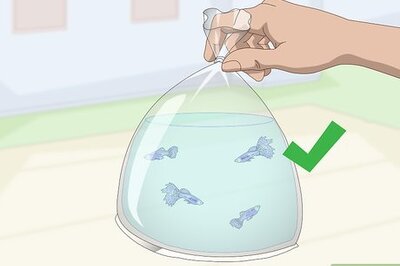
views
Pancham Puriwala is a fine example of the labour and struggle of a migrant, who came to Mumbai and made a place for himself in the history of the city. Pancham Sharma came to Mumbai from Uttar Pradesh in the 1840’s and set up a small cart selling Puri and a ‘raswalla pumpkin sabzi’. Today, they serve five different versions of puris – the sada puri (plain), the stuffed masala puri, paneer puri, palak puri and a red beetroot puri – with the puris they serve Chhole, Aloo Sabzi, Aloo Matar, Pakoda Kadhi, Aloo Methi, Shahi Paneer amongst other things, but the Bhopla Dsabzi (pumpkin sabzi) that Pancham Sharma started his life with, remains the lifeline of the restaurant. Unchanged and unrivalled for over 100 years.
ALSO READ | What The Fork: Kunal Vijayakar Lists His Favourite Mutton Dishes across India
Till a few years ago, a visit to Pune meant a trip to Dorabjee and Sons Restaurant. We were there every summer vacation. My aunt had a house three lanes away from this small rustic eatery. Housed in a back lane of the quaint Camp area of Pune, inside a road facing cottage with low roofs and thick damp walls, this 143-year-old establishment still stands as a reminder of a bygone era. You enter a small verandah with a few chairs and drink chillers. On the left is the counter, behind which sits the fourth-generation Dorabjee Sorabjee Chindy family, taking orders and snapping orders at the same time. On the right, are simple tables and chairs for those who want to eat in. In the large kitchen straight ahead, plainly visible to the eye, are large cauldrons of ‘masala dal’, ‘salli boti’, ‘salli mutton’ and mutton pulao all smoldering on wooden fires.
A sweaty hand is sweltering over a hot vat of boiling oil, frying large legs and thighs of chicken Farcha, golden and lacy, and palm-sized chicken and mutton cutlets. We always came in, ordered our food and took away a parcel. In those days when there was no takeaway counter, instead you could stand at the door of the kitchen, order your food and make sure you got the choicest of pieces of Salli Chicken and Farcha at the same time ensuring that they packed enough meat and potato in the Mutton Pulao and enough ‘achaar’ and ‘kachumber’ along with the Dhansak. Alternatively, you could sit there in the sweltering summer heat and eat that spicy ‘keema pav’ and ‘masala dal’ and cutlet till little rivulets of sweat dripped down your neck and drops of tears ran down your face with only a chilled Ardeshir Raspberry, Lemon or Ice-Cream Soda to wash it all down. I can’t take the heat anymore, but I still make sure I drop in, every time I go to Pune.
Like this heritage eatery in Pune, but very European is Glenary’s in Darjeeling. Glenary’s Bakery and Café has been at Darjeeling’s Mall Road at Chowrasta since 1935. A striking two-storeyed whitewashed colonial building with the name Glenary’s distinctly emblazoned in serif capitals almost across it’s width. Inside those welcoming doors is an old Italian style confectionary and café that has not only stood the test of time, it’s as if time itself has stood still in there. You can imagine ‘saabs’ and ‘memsaaabs’, dressed in seersucker and silks sipping tea and nibbling biscuits.
You can step in for a cup of hot steamy freshly brewed Darjeeling tea served in German silver pots, which is served with their range of cakes, pastries and breads. Opened in what seems like another time zone, by an Italian named Vado, the bakery serves an array of tarts, marzipans, and chocolates and confections. Step through the doors and you are welcomed by the smell of the freshly baked cakes and muffins. Step out onto the large terrace and you can soak in the views of the majestic Kanchenjunga while eating Glenary’s legendary English breakfast. Porridge with toast and jam and fried eggs, sunny side up, along with a portion of baked beans, bacon and sausages. If you are there at lunch time, feast on their beef steak potatoes, or shepherd’s pie, or better still roast pork with French fries and if you are feeling terribly carnivorous, a mixed grill. If all this fails, at least a cup of coffee next to the fireplace is de rigueur. These hills are indeed alive with the sounds of breakfast.
ALSO READ | What The Fork: We Are Not Italians, Let’s Not Use Tomato In Every Recipe, Writes Kunal Vijayakar
I was told that there was one place in Kolkata that was created just for arguing. A place where all you did was ordered endless cups of tea and coffee, smoked innumerable cigarettes, and argued, discussed, postulated, remonstrated, and pettifogged at length. You discussed communism, socialism, Karl Marx, Chittaranjan Das, Sarat Chandra Bose, and Netaji Subhash Chandra Bose. You argued about Ray and Ritwik Ghatak or better still Akira Kurosawa. All this over coffee and pakodas.
The Indian Coffee Board founded the first Indian Coffee House in Mumbai in 1936, a popular meeting place for intellectuals, freedom fighters, social activists, revolutionaries, and the free spirited. In 1942, five years before Independence a branch of Indian Coffee House opened opposite Presidency College on Kolkata’s College Street. This became an intellectual hive and a meeting place for students and even those who had long passed out of the colleges on College Street. When I first went there, I looked up at the vast floor, the high ceilings and the large gallery above. At the height of its popularity the walls must have echoed with the voices of dissent and agreement.
The food is nothing much to write about, but some dishes hold a place in the heart of the people. Like onion pakodas with sauce, mutton sandwiches, chicken kabirazi, (a frilly, egg batter fried cutlet), omelettes, fish fry, baked or grilled fish. The food is all cheap and affordable. It also seems like the menu hasn’t changed at all since 1942 and the prices have just about. The service is slow and plodding, but those who come here never seem to be in a hurry or want to leave.
These are just four places that have been around for years, but there are a few more. Like Leopold Café in Mumbai that opened in 1871 and has served as a haven for every visiting foreigner to Mumbai, including some unwanted Pakistani terrorists. I can vouch for their Akuri, their Grilled Fish in Mustard sauce, their Triple Schezwan and even their juicy Buff Chilly and Chicken Tikkas, along with a pint of chilled beer.
Then there is the recently renovated United Coffee House, Delhi, that first opened in 1938 and their menu still harks back to India’s swinging 1950s, with Gambo Ham and Chicken Steak Sizzler, Fillets de Sole Meuniere (French style fish pan-fried in lemon butter), Biscuits and Gravy (buttermilk dough biscuits, served with a creamy chicken sausage gravy) Shashliks, Chimichnaga and my favourite Nargisi Kofte.
So while we celebrate 75 years of Independence, our freedom fighters and our icons, let’s also celebrate these places, which are also iconic in their own way.
Kunal Vijayakar is a food writer based in Mumbai. He tweets @kunalvijayakar and can be followed on Instagram @kunalvijayakar. His YouTube channel is called Khaane Mein Kya Hai. The views expressed in this article are those of the author and do not represent the stand of this publication.
Read all the Latest News, Breaking News and Assembly Elections Live Updates here.



















Comments
0 comment